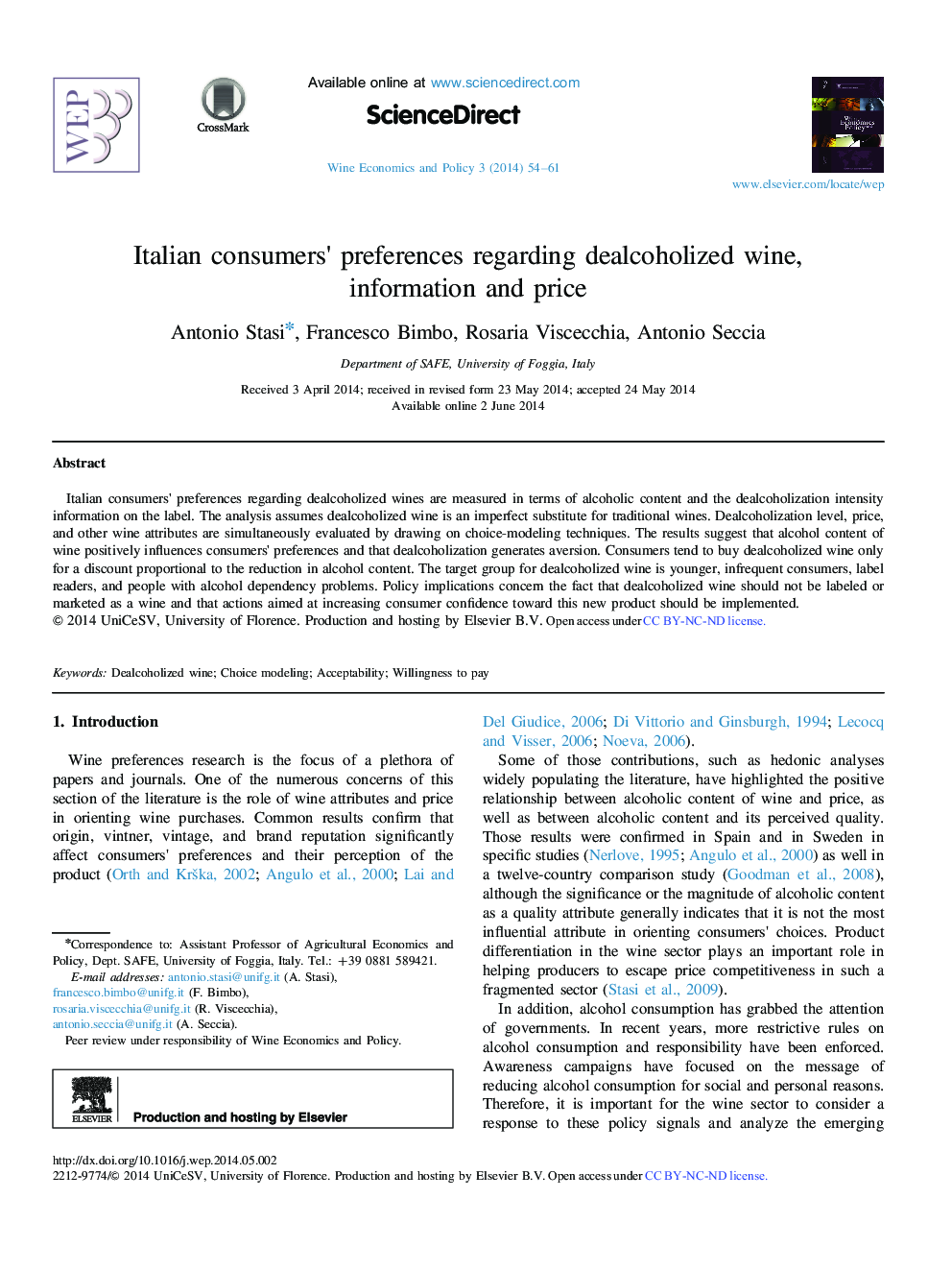| Article ID | Journal | Published Year | Pages | File Type |
|---|---|---|---|---|
| 1025393 | Wine Economics and Policy | 2014 | 8 Pages |
Italian consumers׳ preferences regarding dealcoholized wines are measured in terms of alcoholic content and the dealcoholization intensity information on the label. The analysis assumes dealcoholized wine is an imperfect substitute for traditional wines. Dealcoholization level, price, and other wine attributes are simultaneously evaluated by drawing on choice-modeling techniques. The results suggest that alcohol content of wine positively influences consumers׳ preferences and that dealcoholization generates aversion. Consumers tend to buy dealcoholized wine only for a discount proportional to the reduction in alcohol content. The target group for dealcoholized wine is younger, infrequent consumers, label readers, and people with alcohol dependency problems. Policy implications concern the fact that dealcoholized wine should not be labeled or marketed as a wine and that actions aimed at increasing consumer confidence toward this new product should be implemented.
